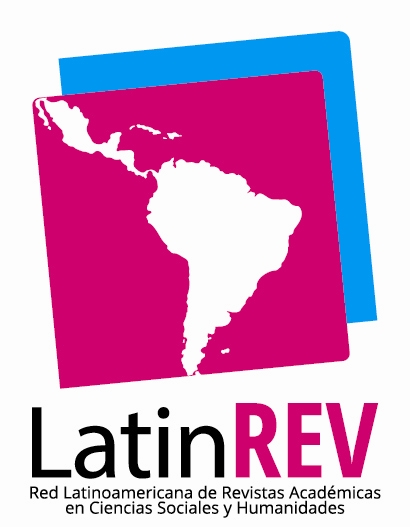Identidades en las Universidades Argentinas. Análisis de algunos ejemplos simbólicos
Palabras clave:
identidad, universidad, integración, regulación, prácticas simbólicasResumen
En el presente trabajo abordamos dos dimensiones planteadas por Emile Durkheim (1858-1917) sobre la conformación de lo social: integración y regulación, como dimensiones y condiciones claves en la conformación de las identidades universitarias. Tomamos tres casos de universidades argentinas: la Universidad Tecnológica Nacional (UTN), la Universidad Nacional de San Luis (UNSL) y la Universidad de Buenos Aires (UBA). Describiremos prácticas simbólicas, en donde la integración y regulación se presenten. Las mismas nos irán mostrando sus fortalezas y debilidades, dado que partimos de la premisa que todo sistema social, por más acotado que esté a una organización, más y mejor puede desempeñar su labor si éstas dimensiones se encuentran presentes y articuladas. Tomar la Universidad de Buenos Aires que, como caso resulta inevitable si se quiere hablar de las universidades argentinas; por su historia, por su tamaño, por su prestigio y también por sus problemáticas. La elección por la UTN resulta por su particularidad organizativa y disciplinar. Y la UNSL por ser un tipo de institución de tamaño intermedio con una antigüedad relativa, por lo tanto, semejante y representativa de otras existentes. Todo el trabajo está atravesado por la pregunta ¿Cómo contribuyen a la conformación de las identidades universitarias las dimensiones señaladas por Durkheim?
Descargas
Citas
Behcer, Tony (2001). Tribus y territorios académicos. La indagación intelectual y las culturas de las disciplinas. España: Gedisa.
Burton Clark, Robert (1991). El Sistema de Educación Superior. Una visión comparativa de la organización académica. Azcapotzalco México: Editorial Nueva Imagen/Universidad Autónoma Metropolitana.
Chacaltana Huarcaya, R. E y otros (2021). Gobernanza Educativa, Vol. 4, N° 15. Recuperado de: https://igobernanza.org/index.php/IGOB/article/view/140
Durkheim, Émile (1967). La división del trabajo social. Buenos Aires: Schapire.
Durkheim, Émile (1990). Educación y Sociología Homo Sociología Barcelona. Recuperado de: http://www.iunma.edu.ar/doc/MB/lic_historia_mat_bibliografico/Educaci%C3%B3n/Durkheim-%20Educaci%C3%B3n%20y%20Sociolog%C3%ADa-%20Cap%C3%ADtulo%201.pdf
Durkheim, Émile (2009). El Suicidio. Buenos. Aires: Ediciones libertador.
March, Jame y Olsen, Johan (1979). Ambiguity and Choice in Organizations. Oslo: Universitetsforlaget.
Mazzola, Carlos Francisco (2007). “La elección directa en la UBA. ¿Puede aportar alguna solución a la crisis de gobierno?”, en Fundamentos en Humanidades, Vol. 8, Issue 2, 113.126. Nueva Editorial Universitaria, San Luis. Recuperado de: https://www.redalyc.org/articulo.oa?id=18481607 (15/11/23).
Mazzola, Carlos Francisco (2020). UBA y UTN: dos modelos para repensar la educación. Diario Perfil. Sección Universidades Historia y Vinculo. Buenos Aires. Recuperado de: https://www.perfil.com/noticias/universidades/uba-y-utn-dos-modelos-para-repensar-la-educacion.phtml (7/10/2023).
Mazzola, Carlos Francisco; Napoli, Fernando Pablo y Tilli, Patricia (2022). “Identidades Universitarias: Entre las trayectorias institucionales, la discriminación y lo identitario”, en Tercer congreso nacional y primero latinoamericano de educación, universidad y comunidad 2022. Universidad Nacional de San Luis.
Mollis, Marcela ( 2007). “Refundar la UBA”, en Lemon Diplomatic, septiembre 2007, N° 99. Buenos Aires: Siglo XXI ediciones.
Napoli, Fernando Pablo (2005) (2° ed). Política Educativa y Organización Académica de la Universidad Tecnológica Nacional (1948-1962). Buenos Aires: CEIT.
Napoli, Fernando Pablo y Tilli, Patricia (2019). Investigación Educativa y Docencia Universitaria. Buenos Aires: FEDUN. (7/10/2023).
Ozcoidi Maiza, Carlos (1995). “La definición del concepto del honor. Su entidad como objeto de investigación histórica”, en Espacio, Tiempo y Forma, Serie IV, l-i.
Oloris, Mario (2023). La Elección Directa de las Autoridades Universitarias. ¿Una Tendencia en Retroceso? Recuperado de: https://www.academia.edu/37315499/ (7/10/2023).
Páez Martínez, Ruth Milena (2013). Educación Cultura y Simbolismo. Recuperado de: https://revistas.udistrital.edu.co/index.php/enunc/article/view/74811 (12/3/2023).
Portal Web De La UNCAUS (2022). Recuperado de: https://uncaus.edu.ar/index.php/inicio/noticias/685
Real Academia Española: Diccionario de la lengua española, 23.ª ed., [versión 23.6 en línea]. Recuperado en: https://dle.rae.es (7/10/2023).
Riveros, Sonia (2022). UNSL Recorriendo su Historia. Recuperado en:
http://programahistoriaymemoria.unsl.edu.ar/?page_id=26
Subsecretaría De Inserción Laboral Rectorado UBA (2019), Vinculación de los perfiles de la UBA con el Mercado Laboral. Recuperado en: http://insercionlaboral.uba.ar/SiteAssets/Documentos%20del%20sitio/Informe%20Vinculaci%C3%B3n%20UBA%20Mercado%20Laboral%20vf.pdf (7/10/2023).
Descargas
Publicado
Número
Sección
ARK
Licencia
Derechos de autor 2023 Carlos Francisco Mazzola

Esta obra está bajo una licencia internacional Creative Commons Atribución 4.0.






